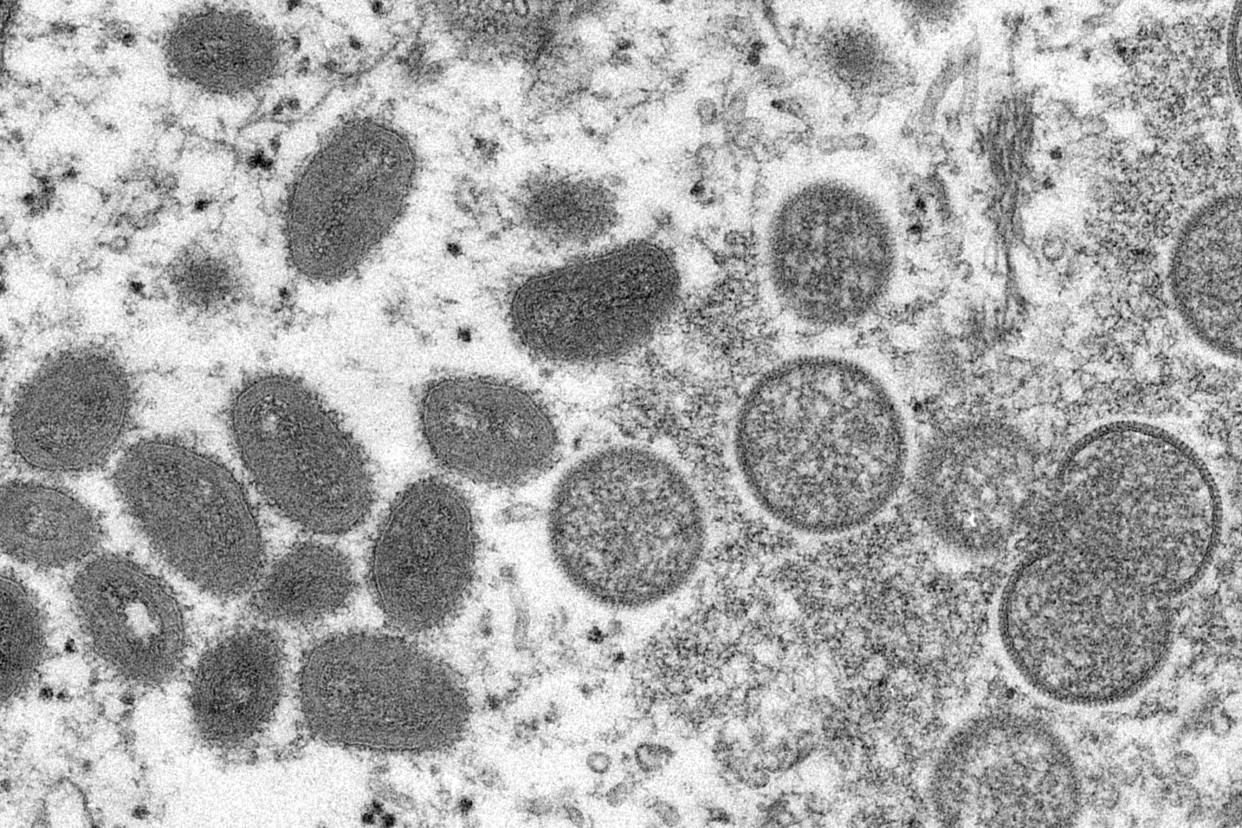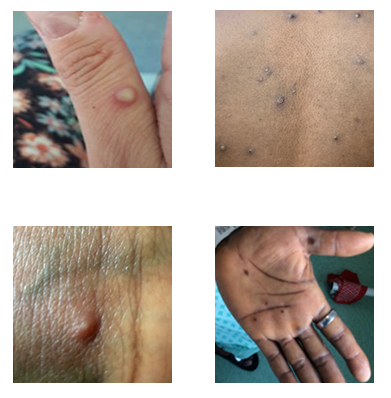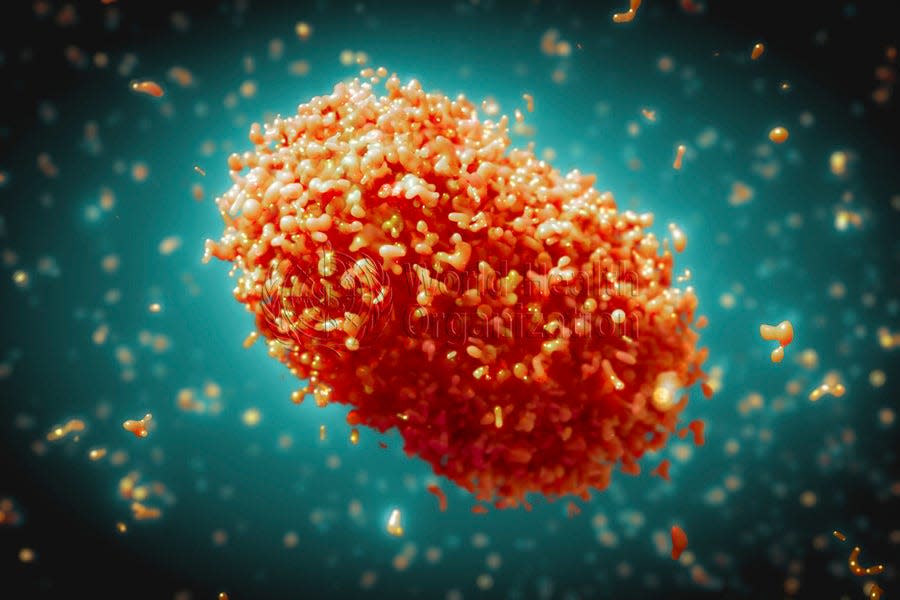Monkeypox: What Californians need to know about the virus outbreak

The world is currently grappling with a multi-country outbreak of monkeypox, and several U.S. states, including California, have reported cases. Should Californians be worried?
The last time the Western hemisphere faced a monkeypox outbreak was in 2003, when there were 47 confirmed and probable cases reported in six states— Illinois, Indiana, Kansas, Missouri, Ohio and Wisconsin — due to imported small mammals from Ghana. This marked the first time that human monkeypox was reported outside of Africa.
In the latest outbreak, there have been 44 confirmed cases of the virus in the United States as of Thursday. Globally, the virus has been reported in at least 31 countries.
Here's what you should know about the current monkeypox outbreak.
What is monkeypox?
Monkeypox is a rare disease caused by infection with the monkeypox virus. The first human case was reported in 1970 in the Democratic Republic of Congo, according to the Centers for Disease Control and Prevention. The virus is usually found in Central and West Africa and does not occur naturally in the U.S., but recent national cases have been discovered due to international travel or animals imported from areas where the disease is more common.
Monkeypox is closely related to smallpox, a serious infectious disease caused by the variola virus. Smallpox was declared eradicated worldwide in 1980.
There are two known variants of the monkeypox virus. The variant currently circulating is the West African strain which causes less severe disease, according to the California Department of Public Health.

What are the symptoms?
Symptoms can occur five to 21 days after exposure, and include fever, headache, muscle aches, swollen lymph nodes, rash and lesions often in the genital and perianal region. Illness typically lasts for two to four weeks. According to the CDC, monkeypox is fatal in as many as 1% to 11% of people who become infected.
How is it spread?
People usually become infected through close contact with skin lesions or bodily fluids of infected animals or humans (alive or dead), including droplets, and can also be spread through sexual contact, explained Barbara Cole, director of disease control for Riverside County Public Health. At this time, it is not known if the virus can spread through semen or vaginal fluids, the CDC states.
The virus may also spread through direct contact with materials that have touched body fluids or sores, such as clothing or linens.
Dr. Shubha Kerkar, director of infectious diseases at DAP Health, a health care organization that provides a wide range of services, said in a statement that the virus does not discriminate and can affect anyone.
“I believe it is very important that we don’t use the current outbreak to cause stigma toward the LGBTQ communities,” Kerkar said. “The reason the current outbreak was first reported in gay and bisexual men is because the diagnosis happened at sexual wellness clinics.”
How many cases have been reported in California?
As of Wednesday, there have been at least eight probable and confirmed monkeypox cases reported in Los Angeles and Sacramento counties.
In Riverside County, Cole said on June 2 she received five reports of people with rashes, but they have not been confirmed as monkeypox cases. None of the five rash cases have fit the criteria for monkeypox testing, County of Riverside Emergency Management Department spokesperson Shane Reichardt said on Friday.
As of Wednesday, county spokesperson Jose Arballo Jr. said two of the rash cases were cleared.
The California Department of Public Health states the "risk of monkeypox to the public is currently very low based on the information available."
If I get sick, what should I do?
Cole suggests people first speak with their health care providers if they suspect they might have monkeypox. They should avoid going to a clinic or health care setting before speaking with a provider so that facilities can take appropriate precautions to protect others.
If someone does have monkeypox, board certified infectious disease specialist Dr. Phyllis Ritchie said they should stay home until lesions scab over and heal. British health authorities also advise those who have been infected to use condoms during sexual activity at least eight weeks after the illness subsides, The Washington Post reports.
There is no specific treatment approved for monkeypox infections, according to the CDC, but antivirals developed for smallpox may be helpful.
Previous vaccination against smallpox may also provide protection, Ritchie said. Routine smallpox vaccination in the U.S. stopped in 1972 after the disease was eradicated in the nation.

How does monkeypox compare to COVID-19?
Monkeypox and COVID-19 are both viruses, but their similarities pretty much end there.
The California Department of Public Health states that monkeypox is much less contagious and spreads much slower than COVID-19. Additionally, the monkeypox virus mutates more slowly than coronaviruses and is "not a concern currently."
Another difference between the two is that monkeypox has been studied for several decades.
"We don't think it will be like COVID in the sense that we didn't know anything about COVID, it was a brand new virus," Ritchie said. "But monkeypox we've known about since it was first identified in 1958 in monkeys."
Is it safe to travel?
The CDC has moved its travel advisory to Level 2, which means travelers should practice enhanced precautions, such as:
avoiding close contact (including sexual contact) with people who are sick or have a rash and contaminated items.
washing your hands.
avoiding animals when traveling, which includes not touching live or dead wild animals, or eating products that came from wild animals.
On Monday, the agency recommended that travelers wear masks, but then dropped the recommendation, according to the New York Times.
Ema Sasic covers entertainment and health in the Coachella Valley. Reach her at ema.sasic@desertsun.com or on Twitter @ema_sasic.
This article originally appeared on Palm Springs Desert Sun: Monkeypox: What Californians need to know about the virus outbreak

